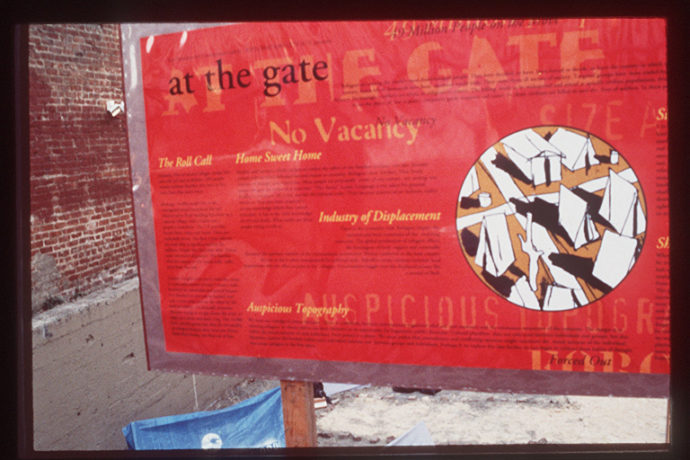
A refugee camp is visible from behind the fence, but not accessible from the street; the entry is barred. Similar to a display in an anthropological exhibit, a map was mounted on the two fences separating the lot from the street access. Text on the map communicated the perceptions of the Bosnian war and general (military) philosophy. The participant was led from the physical representation of a refugee camp, its function as a temporary shelter and settlement, to the camp as a plan for the war itself. The text cites the number of refugees worldwide to date, as well as the number specifically displaced in Bosnia. Other texts comment on ethnic propaganda, UNPROF, humanitarian aid, cultural survival and other issues about the war.
With recent legislation such as Proposition 187, immigrants, refugees and illegal aliens were certainly impacting the city’s political and economic landscape. We wished to draw attention to the fact that most people find themselves in these various categories due to forces beyond their control. They deserve respect, understanding and legal protection. A voicemail system accompanied the exhibit and featured personal interviews with refugees from Bosnia in the United States. This aimed to connect the abstract concepts of the map with individual identities on the phone. In addition to the interviews, the voice mail system listed resources for direct aid for those displaced by the war.
Media: customized tents, benches, camping gear, signage, brochures, telephone, voicemail system on computer
Location: City Site, San Francisco Art Commission Gallery, San Francisco, CA

